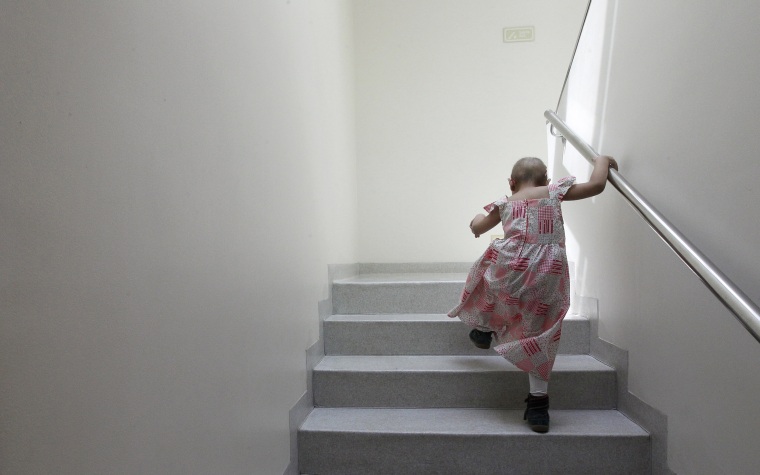Brain cancer now kills more children than any other type of cancer, according to new federal data.
But this new stat comes with at least one potential silver lining: Brain tumors are not becoming more common in kids. And leukemia, the previous No. 1 pediatric cancer killer, is now much less deadly than before, the National Center for Health Statistics found.
In fact, the overall death rate from cancer fell by 20 percent among children and teens between 1999 and 2014, the NCHS found.
Brain tumors and leukemia are still the most common childhood cancers and they’re still the top two killers, causing more than half of all childhood cancer deaths, Sally Curtin and colleagues at the NCHS, part of the Centers for Disease Control and Prevention, found.
“In both 1999 and 2014, more than one-half of all cancer deaths among children and adolescents aged 1–19 years were attributable to either leukemia or brain cancer,” the team wrote in their report.
Related: New Gene-editing Technique Treat's Baby's Leukemia
“Three out of 10 cancer deaths among children and adolescents aged 1–19 years in 1999 were due to leukemia, the most common site, whereas about one in four were due to brain cancer,” they added.
“By 2014, these percentages reversed and brain cancer was the most common site, accounting for 29.9 of total cancer deaths.”
“Pediatric brain tumors have not become deadlier over the years."
Overall, they found, the cancer death rate for children and adolescents fell by 20 percent, from 2.85 per 100,000 children a year in 1999 to 2.28 per 100,000 in 2014.
“Pediatric brain tumors have not become deadlier over the years — survival rates for these patients have stayed relatively flat for decades,” David Arons, CEO of the National Brain Tumor Society, said in a statement.
{
"ecommerceEnabled": false
}Related: Meet the Doctor Helping Kids with Leukemia
“The reason these patients now face the highest mortality rates is because while other areas of research have made great strides in recent years, pediatric brain tumor research has not generated advances that have translated into meaningful clinical benefit for these vulnerable patients.”
Better treatments for leukemia have really helped.
“In 1975, just over 50 percent of children diagnosed with cancer before age 20 years survived at least 5 years. In 2004-2010, more than 80 percent of children diagnosed with cancer before age 20 years survived at least 5 years,” the National Cancer Institute says.
“Improved treatments introduced beginning in the 1970s raised the 5-year survival rate for childhood acute lymphoblastic leukemia from less than 10 percent in the 1960s to about 90 percent in 2003-2009,” it added.
“Survival rates for childhood non-Hodgkin lymphoma have also increased dramatically, from less than 50 percent in the late 1970s to 85 percent in 2003-2009.”
Childhood cancer is rare, but it’s nonetheless the most common fatal disease affecting U.S. kids.

“In 2014, it is estimated that 15,780 children and adolescents ages 0 to 19 years will be diagnosed with cancer and 1,960 will die of the disease in the United States,” the National Cancer Institute says.
"It is important to remember that there is nothing these children or their parents could have done to prevent these cancers."
Boys are about one-third more likely to die of childhood cancer than girls for reasons that are not entirely clear. But it’s one health area where there aren’t many racial disparities: black children are no more likely to get cancer than white children are.
Related: Puppy Love is a Lifesaver for This Kid With Leukemia
Most childhood cancers are mysterious. Sometimes, the same processes that cause children to grow so rapidly go a little haywire and cause tumors instead, the American Cancer Society says.
A few are inherited. About 25 to 30 percent of cases of the eye cancer retinoblastoma are caused by an inherited mutation in a gene called RB1.
“Most gene changes are probably just random events that sometimes happen inside a cell, without having an outside cause,” it adds.
“Other than radiation, there are no known lifestyle-related or environmental causes of childhood brain tumors, so it is important to remember that there is nothing these children or their parents could have done to prevent these cancers.”
Other common pediatric cancer killers in 2014, according to the NCHS:
- Bone and cartilage cancer – 10 percent
- Thyroid and other endocrine glands – 9 percent
- Mesothelial and soft tissue - 7.7 percent
